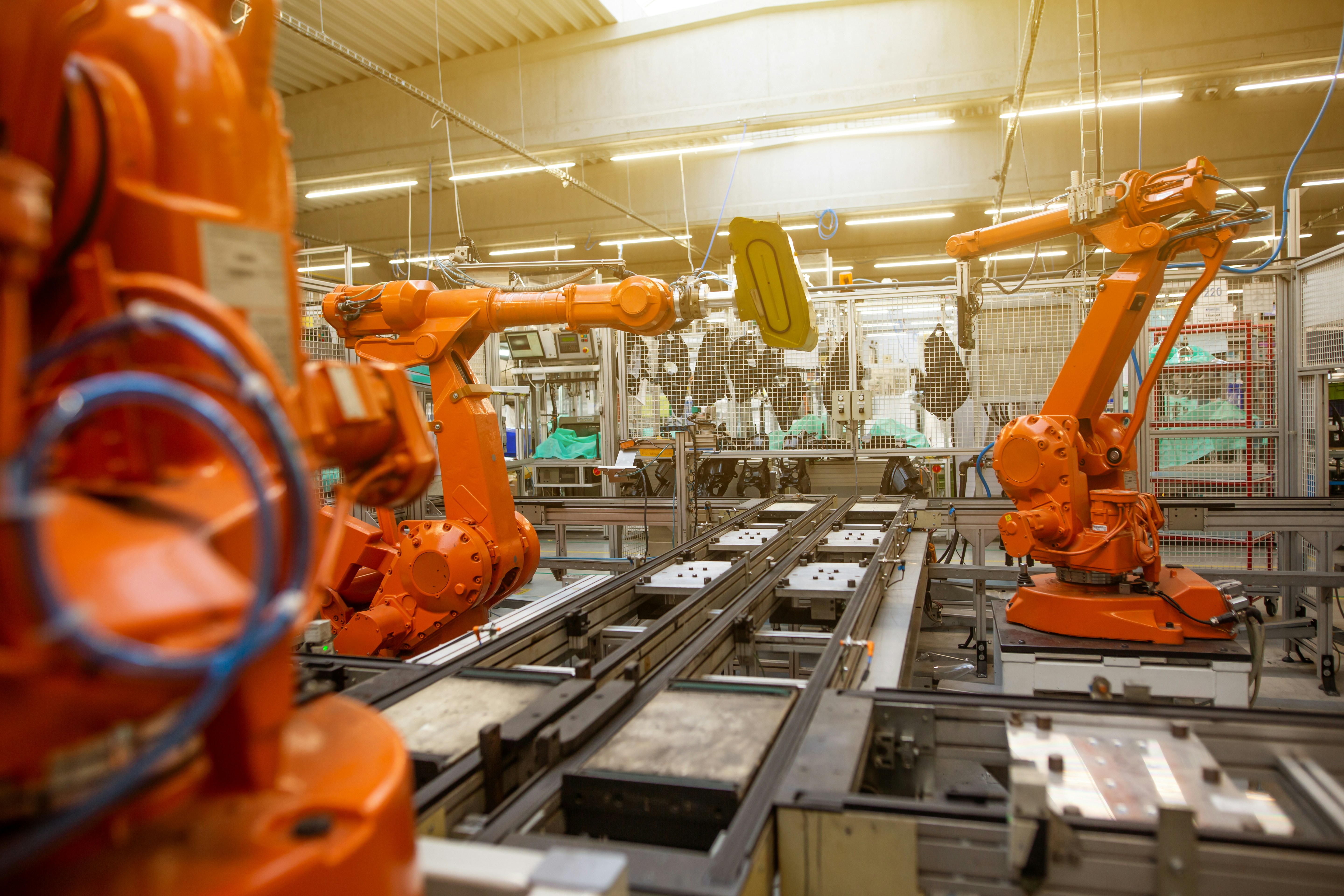
Why the UK Could Be the World’s Next Robotics Jobs Hub
Robotics is reshaping industries—manufacturing, health care, agriculture, logistics, and beyond. From industrial robots assembling vehicles to surgical robots assisting complex procedures, and from drone deliveries to autonomous inspection systems, the boundaries of what robots can achieve are expanding daily.
With rising demand for automation, productivity, and intelligent systems, organisations both public and private are investing heavily in robotics technologies. This surge in adoption has triggered increased demand for professionals skilled in robotics engineering, AI-enabled control systems, hardware design, and integration.
The United Kingdom possesses the essential components to become a global robotics jobs hub: world-class research institutions, innovative robotics firms, strong industrial bases, and supportive policy frameworks. This article explores why the UK is well-positioned, where demand is growing, the career paths emerging, and what must occur to fully establish robotics as a powerhouse in UK employment.
1. The UK Robotics Landscape Today
The UK's robotics ecosystem is both mature and growing:
Universities such as Oxford, Cambridge, Edinburgh, Imperial College London, and Manchester are at the forefront of robotics research, robotics AI, and human–machine interfaces.
Clustered innovation hubs—particularly in the Midlands, the “Silicon Glen” in Scotland, and the South West—are emerging around advanced manufacturing and autonomous systems.
Robotics firms range from elite deep-tech startups to established industrial suppliers, including those designing service robots, surgical systems, agricultural drones, and autonomous vehicles.
Public investments are accelerating robotics deployment in infrastructure inspection, manufacturing automation, and health-tech programmes.
This environment consistently produces new job roles across R&D, engineering, integration, deployment, and operations.
2. Why the UK Is Well Placed to Lead in Robotics
Several competitive advantages set the UK apart:
Academic leadership: The UK's research output in robotics, mechatronics, sensor systems, and AI integration ranks among the world’s best.
Industrial heritage: Strong sectors like automotive, aerospace, and defence provide both demand and manufacturing expertise for robotics application.
Established innovation hubs: Centres like the Advanced Manufacturing Research Centre (AMRC), Edinburgh Robotics, and the Bristol Robotics Laboratory nurture talent and ecosystem growth.
Supportive funding mechanisms: Grants, industrial partnerships, and innovation programmes accelerate technology translation and job growth.
Ethical and regulatory leadership: UK research emphasises responsible robotics and safety standards, offering global trust in systems developed here.
These factors position the UK not just to develop robotics technologies, but to lead in training, deployment, and commercialisation.
3. Government Policy, Regulation & National Strategy
Government plays a pivotal role in fostering robotics careers:
The UK’s industrial strategies prioritise automation, advanced manufacturing, and innovation across sectors.
Dedicated funding for robotics research and prototyping ensure progress moves beyond laboratory to practical applications.
Regulatory frameworks that emphasise safety, standards (e.g. robotics in health, transport, public spaces), and interoperability create trust and open markets.
Public-sector pilot programmes (e.g. in transport, health, smart infrastructure) help embed robotics solutions in real-world settings, generating core demand for robotics professionals.
This deliberate policy alignment creates job openings in engineering, compliance, project management, integration, and public adoption support.
4. Education, Talent Pipeline & Skills Development
The UK’s ability to sustain robotics growth depends on its talent pipeline:
University programmes in robotics, mechatronics, control systems, and AI are well-established and increasingly multidisciplinary.
Industrial placements and research fellowships expose students to practical robotics challenges and industry environments.
Vocational training and apprenticeships in electronics, automation, software, and mechanical engineering feed into robotics roles at technician level.
Professional athletics and upskilling: Workshops and short courses help existing engineers adapt to robotics-specific skills.
Interdisciplinary training in AI, data science, ethics, and human–robot interaction equips workers for future-proof roles.
Expanding opportunities and coordination between academia, industry, and government will help fill growing demand.
5. Sector-Specific Demand for Robotics Jobs
Robotics specialists are in demand across many industry verticals:
Manufacturing & Industrial Automation: Demand for robotics engineers to manage embedded controllers, vision systems, and collaborative robots on production lines.
Health & Surgical Robotics: Positions for design engineers, systems integrators, and clinical deployment specialists.
Agriculture: Growing need for robotics technicians and AI engineers to develop autonomous drones, harvesters, and monitoring robots.
Logistics & Warehousing: Roles in autonomous forklifts, warehouse sorting robots, and inventory robots are increasing.
Transport & Autonomous Vehicles: Robotics professionals are needed for perception, navigation, control, and sensor fusion in self-driving platforms.
Infrastructure & Utilities: Inspection robots for pipelines, bridges, and power systems require designers and maintenance experts.
Service & Social Robotics: Care robots, hospitality automation, and delivery drones create demand for product designers and operators.
This breadth of sectors ensures diverse career paths for individuals with robotics expertise.
6. Job Roles & Career Pathways in Robotics
Key types of roles emerging include:
Robotics Engineer: Designs mechanical, electrical, and control systems, builds prototypes, and oversees integration.
Robotics Software Engineer: Implements perception, control, path-planning, and robot behaviour using ROS or custom frameworks.
Control Systems Specialist: Develops stable, responsive systems using PID, adaptive control, or AI-based controllers.
Hardware Engineer: Works with sensors, actuators, embedded systems, and power electronics for robotics platforms.
Systems Integrator: Combines software, hardware, and infrastructure to deploy robotics systems in real environments.
Robotics Technician: Oversees maintenance, troubleshooting, and testing of deployed robots.
Project Manager / Robotics Programme Lead: Respsonsible for delivery and adoption of robotics solutions in enterprise and public sector settings.
Safety & Compliance Engineer: Ensures robotics systems meet regulatory and ethical standards in their domain.
Research Scientist: Focuses on advancing robotics fields such as manipulation, autonomy, human–robot interaction, or bio-inspired robotics.
Product Specialist / Field Engineer: Presents, deploys, and supports robotics solutions in client environments.
Career progression often leads from front-end technical roles to systems architecture, project leadership, or specialised applied research.
7. Infrastructure, Innovation Ecosystem & Leading Organisations
The UK’s robotics ecosystem is well supported by research, innovation, and manufacturing clusters:
Robotics research labs in academic institutions provide access to advanced facilities, robot platforms, and collaborative research.
Innovation centres like the Bristol Robotics Lab, AMRC, and Edinburgh Robotics drive real-world application and start-up creation.
Test facilities and living labs enable prototypes to be trialled in real environments—e.g. warehouses, hospitals, transport networks.
Industry–university partnerships connect firms with academic teams, translating research into scalable robotics products.
Hardware and manufacturing firms provide applied environments for robotics engineers to work at scale.
Start-ups and spin-outs focusing on specific applications (e.g. healthcare, logistics, agri-tech) supply dynamic entry points into robotics careers.
This ecosystem generates a rich mix of research, applied engineering, manufacturing, and commercial roles.
8. Regional Robotics Hubs Across the UK
Robotics job activity spans multiple UK regions:
Midlands (Coventry, Derby, Birmingham): Automotive and manufacturing provide deep robotics expertise.
Bristol and South West: Known for robotics and AI in areas such as healthcare, drones, and manipulation.
Northern England (Manchester, Leeds): Strong in production automation and research spin-outs.
Scotland (Edinburgh, Glasgow): Innovation in autonomy, sensors, and enterprise deployments.
South East / London: Start-ups, finance and services adopting robotics in logistics, retail, and automation.
Wales and Northern Ireland: Emerging clusters supported by research funding and enterprise zones.
Combined with remote work models, this regional distribution increases accessibility to robotics roles across the UK.
9. Challenges & Risks to Overcome
Key barriers for the UK robotics jobs market include:
Skills shortages: High demand for multidisciplinary expertise—mechanical, electrical, software, control systems—makes recruitment challenging.
Capital intensity: Robotics development and prototyping require costly equipment, impacting early-stage firms and labs.
Regulatory uncertainty: Deployment of robotics in health, transport, and public spaces needs clear safety and liability guidelines.
Integration difficulties: Robotics systems often must integrate legacy systems and complex environments, demanding robust systems engineering.
Market readiness: Adoption remains slower in some sectors due to budget constraints or cultural resistance.
Diversity and inclusion: Engineering fields such as robotics still face under-representation of women and minority groups.
Addressing these through policy, education, funding, and cultural change will support stronger job-market growth.
10. Global Competition: UK vs US, EU, Asia
The UK competes with powerhouse robotics regions globally:
United States: Mass investment, large-scale manufacturing robotics, tech giants, and strong venture funding.
European Union: Germany, Sweden, and other EU nations have deep robotics manufacturing and R&D footprints.
Asia: Japan, South Korea, and China lead in industrial robots with robust robotics ecosystems and national support.
However, the UK’s strengths lie in agile innovation, strong research-to-commercial translation, multidisciplinary environments, safety regulation, and sector-diverse application areas. Strategic focus and policy alignment can maintain and strengthen competitive position.
11. Salary Trends & Job Market Insights
Robotics roles often command competitive compensation, reflecting the technical and cross-domain skills required:
Entry-level roles such as robotics technicians or junior engineers can earn between £30,000–£45,000.
Experienced robotics engineers and software specialists typically earn between £45,000–£75,000 depending on role, location, and sector.
Senior specialists, systems architects, or project leaders can command salaries between £70,000 and £120,000+.
Research leadership in competitive academic or lab environments also offers premium compensation, often tied to grant funding.
Contract engineering or field service roles in healthcare or industrial environments often attract higher day-rates.
Salaries vary by region and domain—with industrial or healthcare robotics often offering higher packages.
12. What Must Happen for the UK to Win
To fully emerge as a global robotics jobs hub, the UK should focus on:
Scaling multidisciplinary education in mechanical, electrical, control, AI, and systems engineering.
Boosting regional prototyping and test facilities to enable faster turnaround from R&D to deployment.
Clarifying regulation and safety standards for robotics across sectors.
Supporting early adoption via public-sector procurement pilots.
Encouraging diversity and outreach, creating inclusive training pathways.
Attracting global talent by offering visas, fellowships, and attractive career pathways.
Enhancing industry–academia collaboration, fostering co-development of robotics systems.
Investing in scale-up and manufacturing capacity, ensuring UK startups and SMEs can grow locally.
These actions will enable sustained job growth, innovation, and global leadership.
13. Conclusion
The United Kingdom stands at the threshold of becoming the world’s next robotics jobs hub. With outstanding research institutions, innovation clusters, industrial heritage, supportive policy, and growing demand across sectors, the UK holds real advantage.
By strengthening education, infrastructure, regulation, and collaboration—alongside ensuring diversity and inclusion—the UK can generate thousands of high-value, future-proof robotics careers.
For professionals—from engineers and researchers to project leads and technicians—the robotics field offers exciting, impactful, and fast-growing career prospects. The UK may be the best place in the world right now to build that future.


